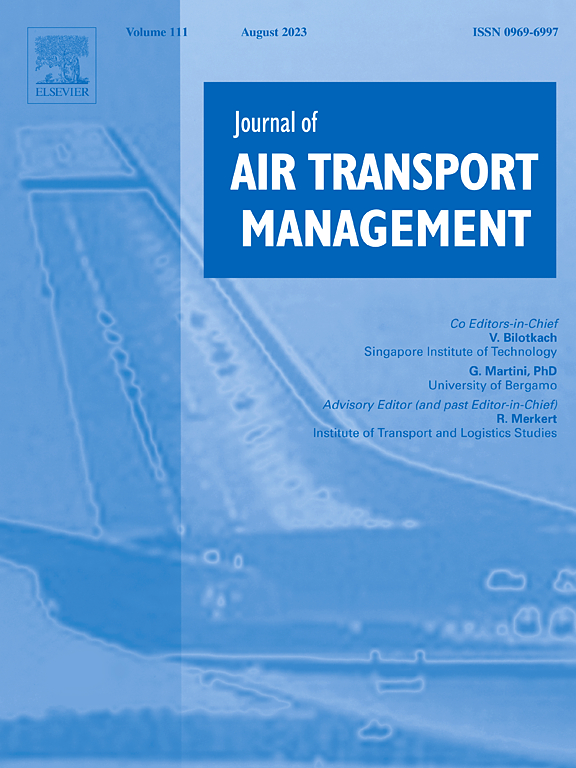模拟空中交通管制员的多智能体估计到达时间预测与动态到达排序
IF 3.6
2区 工程技术
Q2 TRANSPORTATION
引用次数: 0
摘要
准确的预计到达时间(ETA)预测对空中交通管理系统至关重要,包括空中交通管制员(ATCs)负责的飞机排序。虽然在ETA预测和到达排序方面已经取得了重大进展,但通过学习空中交通管制员的专业知识并反思他们的实际考虑,可以进一步改进决策支持工具的开发。为了填补这一研究空白,本文提出了一种基于注意力机制的多智能体模型,用于ETA预测和到达排序,该模型可以解释当前空中交通状况并捕获空管的决策。利用韩国仁川国际机场的真实空中交通监控数据对所提出的模型进行了验证,并在ETA预测、序列相似性和到达排序性能方面与现有模型进行了比较。实验结果表明,与比较模型相比,该模型能够实时提供更容易被空管接受的着陆序列和更准确的eta。具体来说,序列相似度是通过两个等级相关系数来衡量的,这表明了该模型在模拟空中交通管制决策方面的优越性。此外,根据实际的空管反馈,讨论了到达顺序的重要考虑因素。本文章由计算机程序翻译,如有差异,请以英文原文为准。
Multi-agent Estimated Time of Arrival prediction and dynamic arrival sequencing by Emulating Air Traffic Controllers
Accurate Estimated Time of Arrival (ETA) prediction is critical to the air traffic management system including aircraft sequencing for which Air Traffic Controllers (ATCs) are responsible. Although significant advancements have been achieved in both ETA prediction and arrival sequencing, the development of decision support tools can be further improved by learning the expertise of ATCs and reflecting on their practical considerations. To fill the research gap, in this paper, we propose a multi-agent model for both ETA prediction and arrival sequencing based on the attention mechanism that can account for the current air traffic situation and capture the decisions made by ATCs. The proposed model is demonstrated with real air traffic surveillance data recorded at Incheon International Airport in South Korea and compared with existing models in terms of ETA prediction, sequence similarity, and arrival sequencing performance. The experimental results show that, in a real-time manner, the proposed model can provide landing sequences more acceptable to ATCs as well as more accurate ETAs than those of comparison models. Specifically, sequence similarity is measured by two rank correlation coefficients, which shows the superiority of the proposed model in emulating ATC decisions. Furthermore, important considerations in arrival sequencing are discussed based on actual ATC feedback.
求助全文
通过发布文献求助,成功后即可免费获取论文全文。
去求助
来源期刊

Journal of Air Transport Management
TRANSPORTATION-
CiteScore
12.40
自引率
11.70%
发文量
97
期刊介绍:
The Journal of Air Transport Management (JATM) sets out to address, through high quality research articles and authoritative commentary, the major economic, management and policy issues facing the air transport industry today. It offers practitioners and academics an international and dynamic forum for analysis and discussion of these issues, linking research and practice and stimulating interaction between the two. The refereed papers in the journal cover all the major sectors of the industry (airlines, airports, air traffic management) as well as related areas such as tourism management and logistics. Papers are blind reviewed, normally by two referees, chosen for their specialist knowledge. The journal provides independent, original and rigorous analysis in the areas of: • Policy, regulation and law • Strategy • Operations • Marketing • Economics and finance • Sustainability
 求助内容:
求助内容: 应助结果提醒方式:
应助结果提醒方式:


